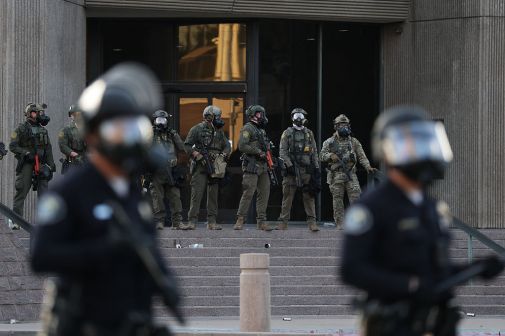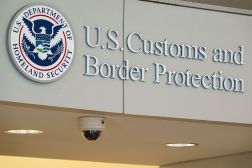Customs and Border Protection taps ‘chatCBP’ to assist workforce

U.S. Customs and Border Protection is implementing an AI chatbot called “chatCBP” for its workforce, following in the footsteps of similar federal government creations like DHSChat and StateChat.
“CBP’s chatCBP is an AI-powered chatbot designed to improve efficiency and access to information for CBP personnel while meeting CBP’s security standards,” a CBP spokesperson told FedScoop in an emailed statement.
The tool uses a large language model and gives workers responses and guidance in a conversational format “quickly and securely.”
According to the spokesperson: “chatCBP offers features like document summarization, compilation, information extraction, and multi-file analysis, reducing the time spent searching for and interpreting documents.”
News of the chatbot comes after other agencies within the federal government have launched their own internal chatbots in an attempt to more securely provide the type of generative AI assistance made popular by ChatGPT. That includes the Department of State and the Department of Homeland Security, CBP’s parent agency.
DHSChat, for its part, was announced last year, and is similarly aimed at aiding workers with routine tasks. But, per the spokesperson, chatCBP is different in that it’s designed to meet unique operational needs that the subagency has, such as requiring more control over LLM development, monitoring, data management and security.
Going forward, CBP also has plans to integrate the tool with its enterprise mission and support applications, like SharePoint. And from a technical standpoint, chatCBP has the ability to implement retrieval-augmented generation, which allows AI tools to get information from external sources, the spokesperson said. In the case of chatCBP, those external sources include agency-specific integrations, data, and application programing interfaces, commonly known as APIs.
CBP didn’t disclose what model the bot uses, citing security reasons — though other government agencies have shared theirs. The General Services Administration, for example, can access several LLMs, including Meta and Anthropic. StateChat, meanwhile, leverages Palantir and Azure OpenAI.
The tool was discussed publicly by CBP Chief Technology Officer Sunil Madhugiri on a panel earlier this month at AFCEA Bethesda’s LEAPS Summit. During the May 13 discussion, Madhugiri said chatCBP would be going into production the following week and noted the changes that new technologies bring.
What organizations are currently going through with technology, particularly with generative AI, is changing the “way we do business moving forward,” Madhugiri said. “If you’re not doing that — agencies, companies, anybody across the board — we are super behind.”
As more personalized chatbots like DHSChat and chatCBP are becoming available, the department has shifted away from allowing use of commercial tools in its environments.
In a memo sent earlier this month, DHS reversed its previous policy allowing some use of commercial tools, like ChatGPT, now that the in-house version exists. The department is also working on a new generative AI policy in line with President Donald Trump’s guidance on accelerating use of the technology in government.
According to the CBP spokesperson, chatCBP is designed to be used by workers and not to replace them. Those workers also receive training and guidance, and are reminded that their own judgment is essential when making decisions.
At the same time, there is interest from the Elon Musk-affiliated DOGE in using AI technologies. According to a Reuters report, the efficiency group is expanding use of Musk’s Grok AI in government. That report cited unnamed sources who said officials at DHS were instructed to use it despite the tool not being approved.
Rebecca Heilweil contributed reporting.






